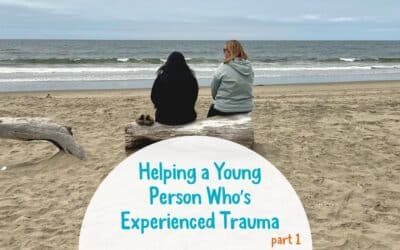Perspective on Trauma and Healing – Part 3

In the past two Perspective on Trauma and Healing posts, we have covered how trauma impacts young people and the importance of relationships for healthy development. Now, we explore the final part of this series: connecting with youth by helping them identify and establish good habits.
Sometimes the best tips for mentoring, whether formally, like in our program, or informally, come from sources beyond child welfare. In this case, we draw from The Habits Academy, an online course developed for executives.
Tip 1: To change your habits, change your identity.
Our youth often become a product of the system. When connecting with a young person, especially from foster care, it’s important to focus on the positive traits that they identify. Let’s take Jolene as an example. She introduces herself as a “typical [foster] kid who kind of likes painting and drawing.” Reframe this with her by stating, “Jolene, you are an artist!” As often as is appropriate, reinforce that positive identity.
Tip 2: Stack the new habit on top of a pre-established habit.
Developing new habits can feel insurmountable, especially for young people dealing with so much change and inconsistency. Here’s what stacking looks like: If the youth wants to commit to doing more physical activity, encourage them to do just 20 jumping jacks before their get ready routine. Same goes for mindfulness exercises—suggest that they take 5 minutes before sleeping to reflect on the positives of the day and what good things are in store for tomorrow. With repetition, these activities become automatic in a short time.
Tip 3: Focus on the simple act that sets the stage for a good habit.
It might be difficult to sit down and write a term paper, but it’s often a lot easier to begin by clearing a workspace to simply brainstorm. Forget about the end product at first and a significant barrier can be removed.
Tip 4: Focus less on goals and more on building a new system and approach.
Goals are important. But if goals are not designed to lead to system change, bad habits come right back. We’ll use dieting as an example. If a teen states their weight is causing issues and they want to get to a healthier weight, help them replace a maximum-number-of calories-a-day goal with a focus on what they can do to promote overall health, such as daily physical activities, omitting sugary drinks, and eating less junk food.
Tip 5: Praise yourself for your bad habit days.
Reverting to a bad habit is natural. For youth who have experienced trauma, the guilt associated with slipping into a bad habit can be a downward spiral. Undo that damage by encouraging even the most minimal thing to make some progress. If your youth committed to limiting screen time and being more active, but then binge-watched all of the Marvel movies over the weekend, encourage him to start again by spending even a few moments outside or exercising to get back into the swing of things.
Mentors who use these five tips have a big advantage in helping to develop life skills and healthy habits in young people. These habits allow them to be better prepared for successful adulthood–this is what our program is all about!
Article by Program Liaison Steve Kempster, LCSW




